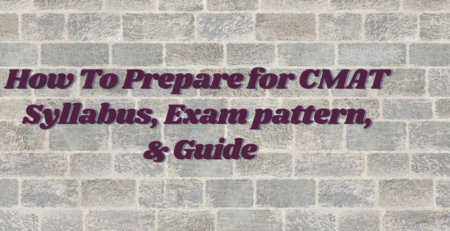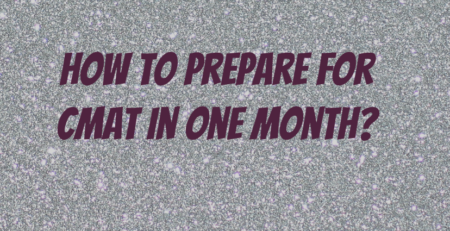Reasons to Take the CMAT Exam
CMAT exam has remained a popular MBA entrance exam for students, and it is expected that with the development of a specialized testing corporation – NTA – the exam will provide admission opportunities in even more B-schools than previously. Here are five critical factors to consider before deciding whether or not to take the exam:
MORE THAN 500 MBA COLLEGES ACCEPT THE EXAM:
Among the 500 MBA schools that accept test results are JBIMS, SIMSREE, PUMBA, K J Somaiya, GIM Goa, BIMTECH, Great Lakes, and IFMR. The cut-offs for these B-schools are likewise not very high.
MODERATE DIFFICULTY EXAM:
The exam will remain reasonably difficult, consisting of 100 basic questions divided into four sections: quantitative techniques and data interpretation (25 questions); language comprehension (25 questions); logical thinking (25 questions); and general awareness (25 questions) (25 Qs). The CMAT’s MCQ-style questions are of moderate difficulty, and the response options are directly related to the question. For example, the questions after the RC paragraph in the exam are clearly related to the text content and can be answered quickly, as opposed to the CAT and XAT, where the questions are indirectly related to the text and you must derive the answer from the information in the passage.
Also read:
How to Score 300+ Marks in CMAT
Avoid these Mistakes to Crack CMAT Exam
CMAT ENSURES ENTRY INTO AICTE-Recognized MBA/PGDM PROGRAM:
All AICTE-approved management universities are included on the list of score-accepting colleges. On the NTA/AICTE website, the list of B-schools and Universities offering admission exclusively includes universities that offer UGC/AICTE-recognized MBA/PGDM programs. Students who pass the exam can be assured of admission to a government-recognized institute that provides management programs.
In thirteen states, authorized government and private universities, as well as highly regarded business schools, are more likely than the state-administered Postgraduate Common Entrance Test, to accept scores as the entrance to MBA admissions under the government quota (PGCET). Test scores will be recognized in Uttar Pradesh, Kerala, Maharashtra, Rajasthan, Chhattisgarh, Nagaland, Goa, Madhya Pradesh, Gujarat, Haryana, Karnataka, Jharkhand, and Himachal Pradesh. It is expected that a higher number of authorized B-schools will accept scores with the establishment of the National Testing Agency (NTA).
LOW-COST UNIVERSITIES:
Unlike IIMs, which have a high-cost structure ranging from Rs.16 lakhs to Rs.22 lakhs, CMAT-accredited MBA/PGDM universities offer equivalent management programs at a reasonable fee ranging from Rs.5 lakhs to Rs.15 lakhs. All of these business schools provide two-year full-time residential MBA/PGDM programs. Some university-affiliated MBA colleges under CMAT, such as Mumbai University and others, have cost structures as low as Rs.2 to 3 lakhs.
TOP B-SCHOOLS ACCEPT THE NATIONAL MBA EXAM:
It is a higher-level national MBA admission exam than the MAT and ATMA. It allows for advancement to the next level. They offer admission to higher-level MBA/PGDM programs. Many MBA programs in India do not recognize MAT or ATMA scores but do accept scores from other exams. DTE-Maharashtra, for example, stated that all 400 MBA colleges linked with the Maharashtra government would accept grades for admission instead of prior MAT and other assessments.
Examination Mode
- Computer-Based Examination (CBT)
- The CMAT exam lasts three hours.
- The total number of questions is 100.
- Sectional Questions
- 20 inquiries
- 400 points in total
Marking Scheme
- +4 Points for Each Correct Answer
- -1 Point for Each Incorrect Answer
Read More: CMAT D-Day Strategy and last minute TIPS













